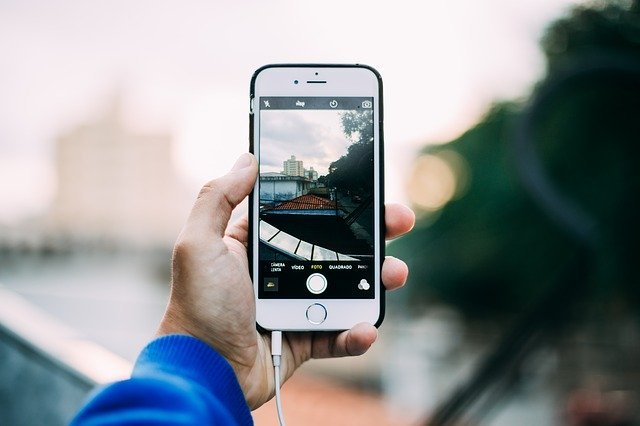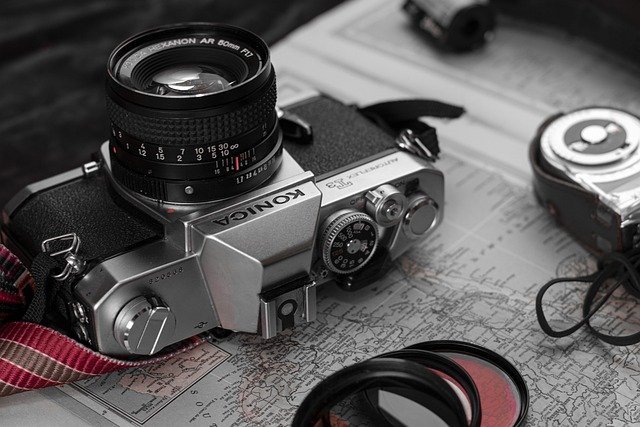
For some people, knowing the key information on photography can be hard. Many people think that photography is something they should just figure out on their own, and they don’t search out the resources available to them. This article will give you a few useful photography tips you may not have known about.
When taking pictures, avoid overcast skies. Including too much of a gray sky will make your pictures appear muted and washed-out. If you find yourself shooting into overcast skies, taking classic, black and white photos may be your best option. Conversely, a bright blue sky will only enhance your photographs, as long as you are mindful of the light.
In the scene before you, frame a select part of it to create a good composition. A great photo will be like you are looking at your object through a little window. Avoid the desire to show more than is needed. To move beyond the small focus of just one picture, try taking a series of photos on the same subject. This is better than one overly general photo.
For landscape photography, attempt to capture the natural depth of the view. By placing a person or familiar object in the foreground of your photo, you will provide the viewer with a sense of scale. Set your cameras aperture opening to a small setting, such as f/8 for most cameras or f/16 for full-frame and panoramic cameras. This will not only increase sharpness in the foreground, but in the background as well.
Check out what other photographers are doing to get ideas to improve your own photography. When you spend time looking at other photographers’ work, you will be able to see many different ways to capture an image.
Properly framing your subject can improve your photograph. Get rid of distracting elements by zooming into your focal point. This allows for a simple, effective shot that contains only a single focal point.
Properly framing your subject can improve your photograph. Zoom in on the focal point; this will help to take attention away from distractions in the surrounding area. Your subject should fill the frame to add the most impact to your photo, avoiding clutter.
Find the right subject that will create an interesting photograph. It doesn’t matter how skilled you are, or how great your equipment is, you need a great subject to photograph. Choose something which inspires you or a model to pose for you.
Take photographs from the moment you leave your front door until you return to it on your next vacation. Once you get to your location, you can find some good places to take photos, but you should take some original shots as well. You can document your entire journey with the camera. This will give you more memories in the future, and it increases the chance a very good shot pops up.
Consider focusing on your subject, and then moving the camera so the subject is not located in the center of the shot. Centering a subject is extremely common, especially among amateurs, and tends to make for a very uninteresting photograph. To add interest to the shot, simply place the subject anywhere but dead center in the viewfinder!
Along with taking shots of people, objects, nature and animals, also take pictures of your souvenirs when you travel. Photograph the souvenir on the shelf in the store, or get a shot of it with the sales clerk. You will always remember where the souvenirs you bought came from and you will have great stories to tell when showing them.
Even if you don’t know your models, make sure they feel comfortable. Many people feel self-conscious or uncomfortable being put in front of a camera. If you approach potential subjects as friends and confidantes, they will be far more likely to cooperate. Help people see photography as an art form, not as a way to invade their privacy.
Get as close as you can to your subject. There is nothing worse than the subject being so far away in a photo that it makes it hard to see colors and details. So, to avoid a subject with a lack of details, make sure everything is clearly visible.
Try to experiment with perspective, expression, and scale. An ordinary object can be transformed to art if the setting distorts its actual size, or lends a silly or unique perpective. Practice altering your composition in order to see familiar objects in a new way.

You can move from area to area around the shot so you are able to find a more interesting shot. If possible, take a spectrum of shots from many angles including from above and below.
Lighting is one of the most important considerations when taking pictures. When taking outdoor photos, pick a time when the sunlight is low; generally late afternoon or early morning is best. If the sun is too high, you will have a hard time getting rid of shadows, and your subject might be bothered by the light. If you must shoot in direct sunlight, at least stand to the side and allow the sun to light from an angle.
There is no special formula that automatically produces a skilled photographer. You will improve as you experiment. Digital cameras give you the ease of not having to develop or keep all your photographs. You can take lots and lots of pictures and view your results easily without the expense of purchasing or developing film.
Carefully read the entire manual that came with your camera. Manuals are often a long read and thick with information. Most people simply ignore them or throw them away altogether. However, the manual is an important source of information and should be taken advantage of. The manual can teach you how to take higher-quality pictures and avoid simple mistakes.
If you like the old style that is associated with using a camera that uses film then you should pick one up from a secondhand store and see how you like it. Using black and white film (200 speed), can also create that old-time look. Use different types of paper when you develop your prints, for example a fiber-based paper.
When you want to try something a little different for a photograph, adjust the focus of your camera to varying degrees. The smaller the f-stop number, or depth field, the more blurry your background will be. This is a good technique to use when the subject is up close, such as in portraits. If you want everything in the composition to be in focus, use a larger f-stop. This can improve the scope and definition in landscape shots.
Many tasks call for us to place things evenly and symmetrically for best results. Perfection is valued in our society, and rightfully so, but when it comes to creating interesting photographs, try pointing your camera in a way that puts your subject slightly off-center. Be aware of the auto-focus feature, which can lock the view to the middle of the lens. Instead, focus the camera manually, then secure the focus prior to taking the photo.
Do not let a great shot go by because you were too busy adjusting your settings. However, you should not always use presets because this enables the camera to make all adjustments for you. Explore each of the settings on your camera and practice using them at times when you are not worried about missing important shots.
Look around for good subjects for your photos, any time you are on the road. To find some help in choosing your starting point, check out some postcards! Postcards have all the photos of attractions and other interesting things that you can include in your own photos.
As you encounter different backgrounds, scenery or subjects, take multiple practice shots. Each photograph situation varies, but practicing can help you get a feel for your environment. The light in which you are shooting can vary frequently, and therefore you should take test shots as often as necessary.
As you have previously learned, it can be hard for many to understand everything about photography. However, once they start to learn some basic, effective techniques, they find that photography can become an enjoyable pastime. Apply the advice laid out in this article, get your camera, and get ready to go!
Silhouettes are unique pictures. You can even try taking silhouette photography using the sunset environment, or another beautiful setting. If the background coloration is considerably lighter than the subject, a silhouette may appear behind the focal point. If you place a flash behind your subject, or if you position your subject in the front of an illuminaated window, you’ll have the ability to form the perfect silhouette. Remember that a glaring outline may be distracting or unflattering.


